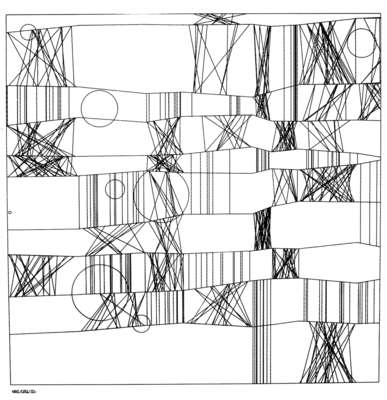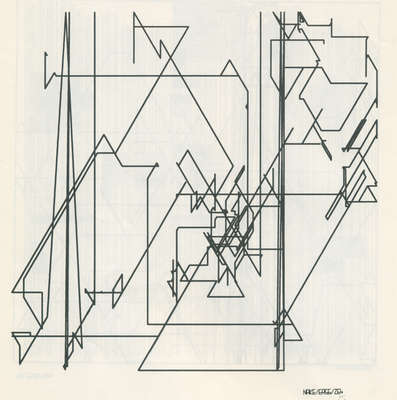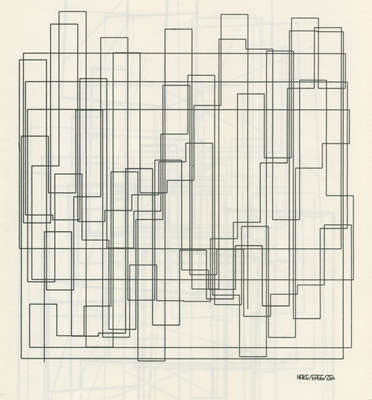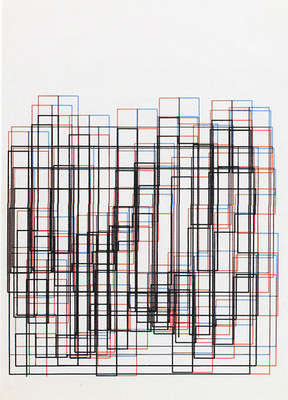From 15th January to 15th February, 1966, the Deutsche Rechenzentrum [German Computing Center] in Darmstadt presented an exhibition on computer art under the unwieldy title, “Herstellung von zeichnerischen Darstellungen, Tonfolgen und Texten mit elektronischen Rechenanlagen” [Production of graphic renderings, audio sequences, and texts by electronic computers]. Perhaps for the first time, it featured the three genres of art: music, text, and graphics. A bit more attractively, its title could have been “Graphics, music, texts by computer”.
Those genres were represented by the following artists: Ben Deutschmann and Max V. Mathews (computer music), Frieder Nake (computer drawings), and Gerhard Stickel (computer text).
The exhibition was the first of its kind to be noticed by the national press, radio, and TV. The nationally leading Frankfurter Allgemeine Zeitung published an article entitled, “Computer vor den Galerien. Graphik und Gedichte des Elektronengehirns in Darmstadt” [Computers at the galleries. Graphics and poems by the electronic brain in Darmstadt] by Günther Vogt on 9 Feb., 1966 [cf. Klütsch, 2007, p. 142ff].
A simple brochure was published for the occasion, Programm-Information Pl-21. It was designed in the typical simple style of a Technical Report as research institutions were using to spread results of their work. At the same time, it was one of the first publications to be devoted explicitly to Computer Art (cf. [Herzogenrath et al., 2007]). It included essays by the artists:
- Frieder Nake: Bemerkungen zur Programmierung von Computergrafiken [Remarks on the programming of computer graphics]
- M. V. Mathews and Ben Deutschman: Music from Mathematics
- Gerhard Stickel: Monte-Carlo-Texte
Indirectly, the exhibition became the first inspiration for artist Otto Beckmann to become interested in working with a computer. His friend, former Bauhaus teacher Georg Muche told him about the event, and Beckmann also received a copy of the publication Pl-21 [cf. Oberquelle and Beckmann, 2008]. In the sequel, Beckmann contacted F. Nake and G. Stickel, from which contact a limited cooperation resulted.






